
Using scrap pieces of leather, I put a dab of Snow Guard is on the Left and a piece of Bee’s Wax is on the right.
Bee’s wax can be pretty expensive…Mountain Equipment Co-Op sells a 60 gram bee’s wax candle for $3.50. I bought a piece of “raw” bee’s wax from a store called Wicks & Wax, in Burnaby, B.C. for about $11.00/lbs.
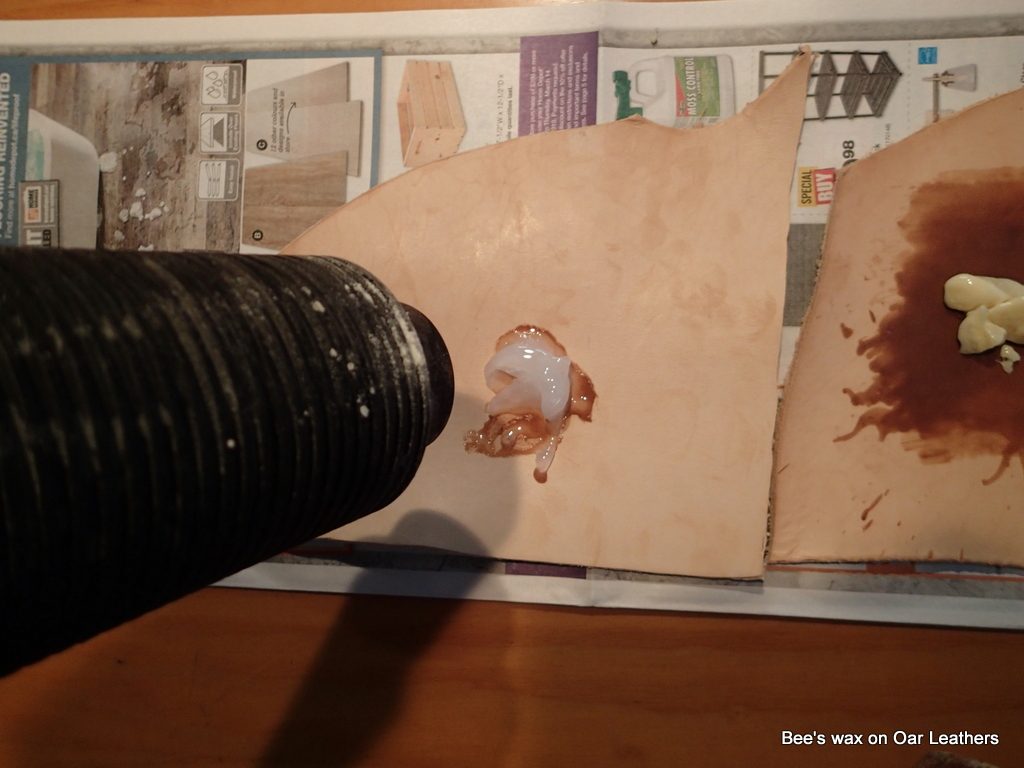
Using a heat gun, I melt the Snow Guard and it soaks into the leather. Not much heat is required. I keep adding Snow Guard an allowing it to soak into the leather.
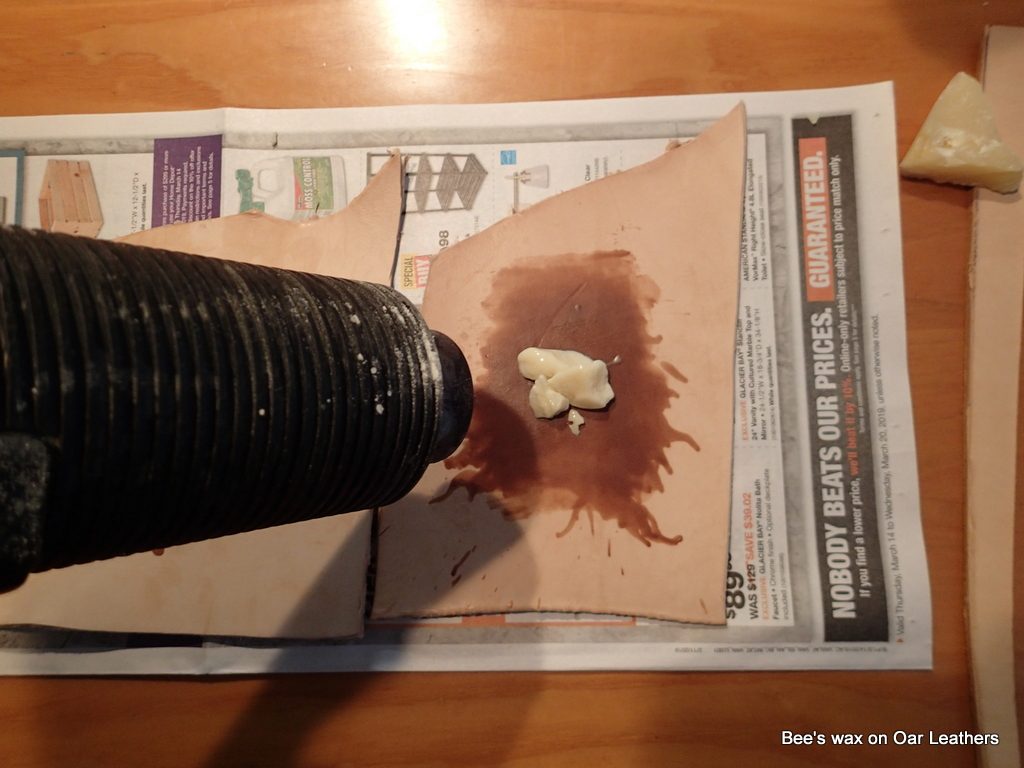
Melting the Bee’s Wax into the leather. More heat is needed to melt the wax compared to the Snow Guard. I am careful not to scorch the leather.
Both the Snow Guard and the Bee’s Wax must be molten to soak into the leather. The leather must be warm enough to keep them molten.



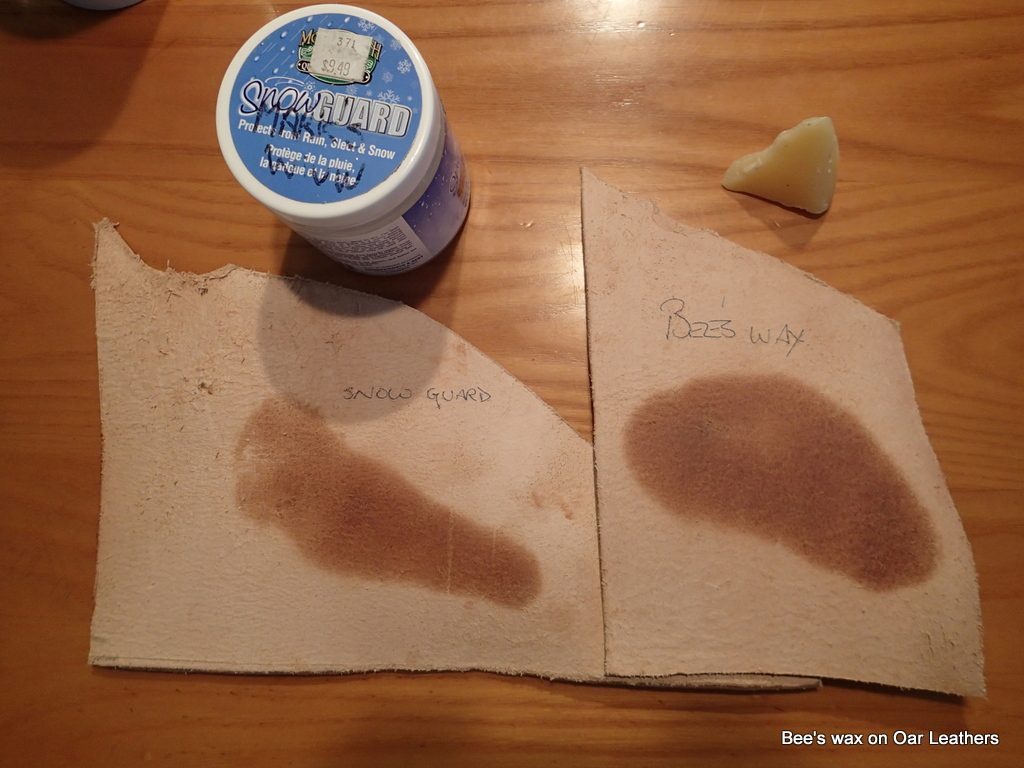
I turn the two pieces of leather over and view the results.

So which is better for treating your Oar Leathers? The Snow Guard is easier to apply, it needs far less heat to penetrate the leather. You can rub the Snow Guard on the leathers and leave them in a warm place or in the sun and the Snow Guard will soak into the leather.
The Bee’s Wax seems to fill the leather more fully but needs a lot more heat to melt and soak into the leather.
I have treated a new set of oars with Bee’s Wax and will try them out and see how well the Bee’s Wax performs.
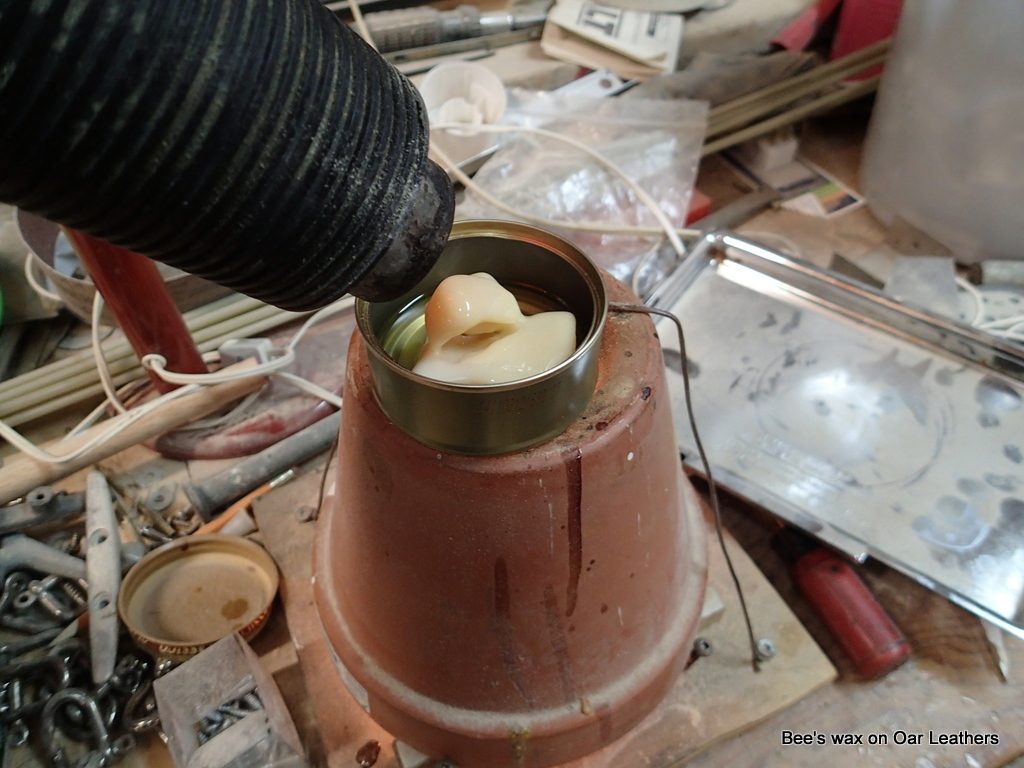
The first step is to melt the wax. I use a tuna tin, my heat gun and a plant-pot heater to melt the wax.
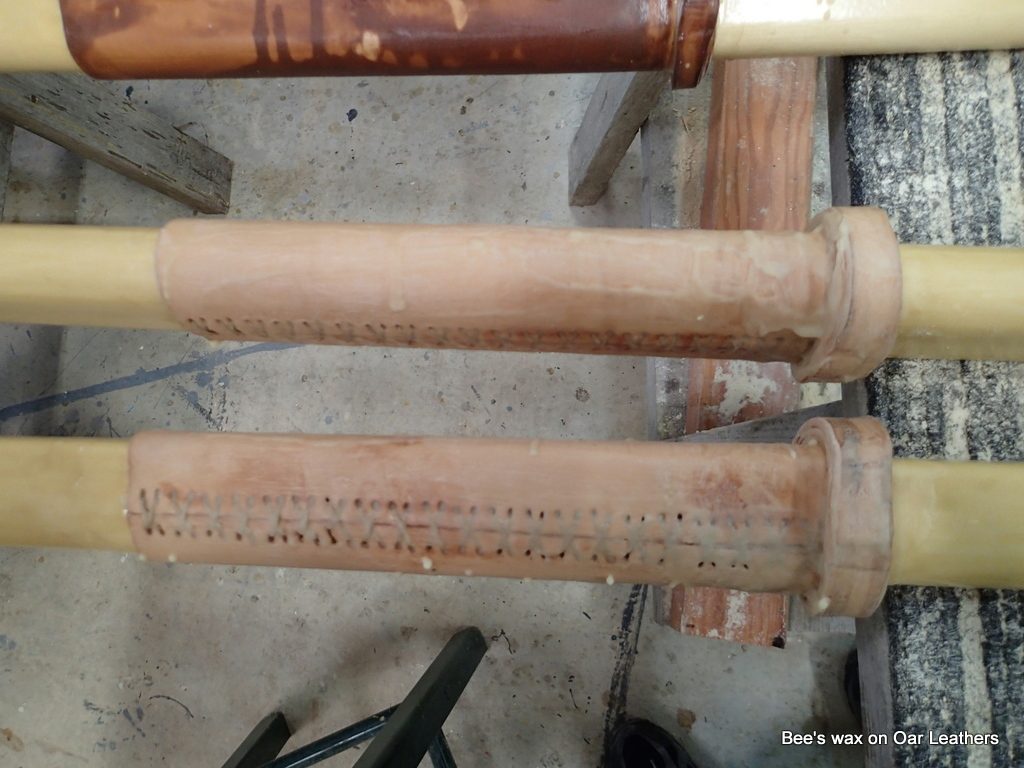
Using a paint brush, I coat the Oar Leathers with the wax. It solidifies almost immediately. I paint on several layers.

I use my heat gun to melt the wax into the leather. Experience is showing me that many thin layers are better than a few thick ones.

I get the leather hot enough to melt the Bee’s Wax, and keep applying it until it no longer soaks into the leather.
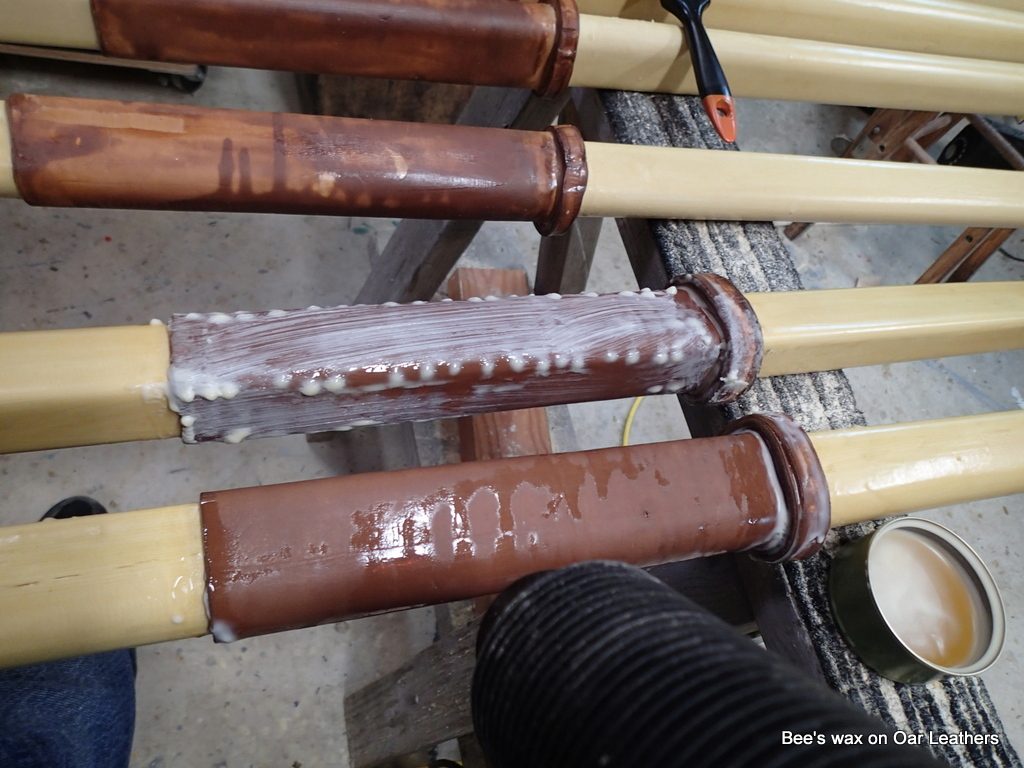
When the leather is saturated, I move to the next oar.

When the leather is saturated, I wipe off the excess wax. The wax does not soak into the leather where the glue is.
With the Oar Leathers Bee’s Waxed, I will try them out and see if I like the “feel” while rowing.

Mike

Mike,
Thank you for taking the time to share your thoughts on oar leathers and buttons.
I found your writing to be most constructive and intend to read more of your thoughts at a later date. Before then I thought it appropriate to show my appreciation.
I have read many articles on boats and boat building since deciding to build my own craft several years ago. None have proven to be more beneficial than yours. In fact it would be true to say that I have gained more from you than from any other writer and my list includes many well know boat builders.
Once again for your contribution.
John Hindle, Margaret River, Western Australia.
So after a year of using beeswax and Snow Guard, which do you recommend?
I have some sno-seal kicking around that I thought I’d try.
Hello Mike,
My conclusion is to use the Bee’s Wax on chafing leathers…such as the leather I have around my mast where it rubs in the thwart mast step hole. Also on the lug spar, where it rubs at the top of the mast. I use Snow Guard on the oar leathers and the wood/leather bailer. I found the Bee’s Wax more “slippery” on the oar leathers and harder to hold the oar in the same position in the oarlock than when using Snow Guard. The Bee’s Wax made the wood/leather bailer too stiff to conform to the curve of the hull while bailing. The only problem I have had with the Snow Guard is if you have a little too much, it can rub off and stain clothing.
Cheers,
Mike
So, Bee’s Wax on the on the mast and spar leathers and Snow Guard on the oars and bailer.
Mike
Excellent. Thank you for the reply. I did use the sno-seal and it looks and feels great. Have not yet tried rowing though.
Hello Mike,
I do not know where you are, but, the Hollyburn Sailing Club has numerous Kayaking Paddles that I tag along with.
If you would like, I can put you on the paddle email contact list.
Just let me know if you want to be put on it.
Hope to see you out on the water.
Mike